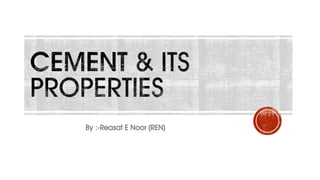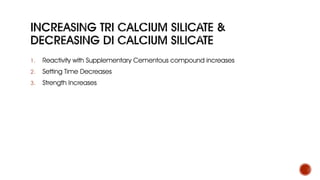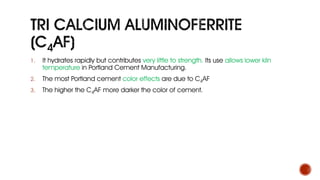The document discusses different types of cement. It defines cement and describes its composition and manufacturing process. The main types discussed are ordinary Portland cement (OPC), Portland pozzolana cement (PPC), Portland blast furnace slag cement (PBSF), rapid hardening cement, low heat cement, sulfate resisting cement, and white cement. It provides details on the characteristics and common applications of each cement type.






















































